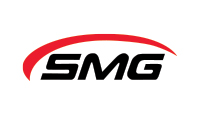July 7, 2015
Change Announced to Kentucky’s “Sulfuric Acid Battery Facility Policy”
POSTED BY
Patricia A. Mason, P.E.TAGGED
SHARE
Many facilities in Kentucky have been subject to emergency planning requirements solely because of their industrial batteries which contain sulfuric acid. The Kentucky Emergency Response Commission’s “Sulfuric Acid Battery Facility Policy,” originally enacted on 24 July 2003, which required local emergency planning committees (LEPCs) to develop TAB Q-7 plans for all facilities with lead acid batteries where the aggregate total of sulfuric acid exceeded 500 pounds has been repealed, effective June 23, 2015. A copy of the notice and more information can be found here. For Kentucky facilities whose inventory includes sulfuric acid (CAS 7664-93-9), the Tab Q-7 threshold will now be consistent with the EPCRA Section 302 Threshold Planning Quantity (TPQ) which is 1,000 pounds. EPCRA Section 302 TPQ’s for various substances are summarized in EPAs List of Lists. The increase in the planning threshold from 500 pounds to 1,000 pounds for sulfuric acid will reduce the number of facilities subject to emergency planning (Tab Q-7 Plans) in Kentucky. This helps reduce the regulatory burden on facilities and also weeds out lower risk facilities for emergency planners and responders. My favorite factsheet on EPCRA is available on the EPA website. For more information on EPCRA compliance in Kentucky, visit the Kentucky Emergency Management SARA Title III webpage.
Note that this change affects the emergency planning threshold for sulfuric acid in Kentucky but not the EPCRA Sections 311 and 312 notification and reporting thresholds. Sulfuric acid is an extremely hazardous substance (EHS). EHSs have a Section 311 and 312 reporting threshold of the TPQ or 500 pounds, whichever is less. Thus, for Tier II reporting the 500 pound threshold for sulfuric acid remains.
I routinely assist clients with EPCRA compliance. Contact me for more information at 502-587-6482 x 211 or pattym@smithmanage.com.
